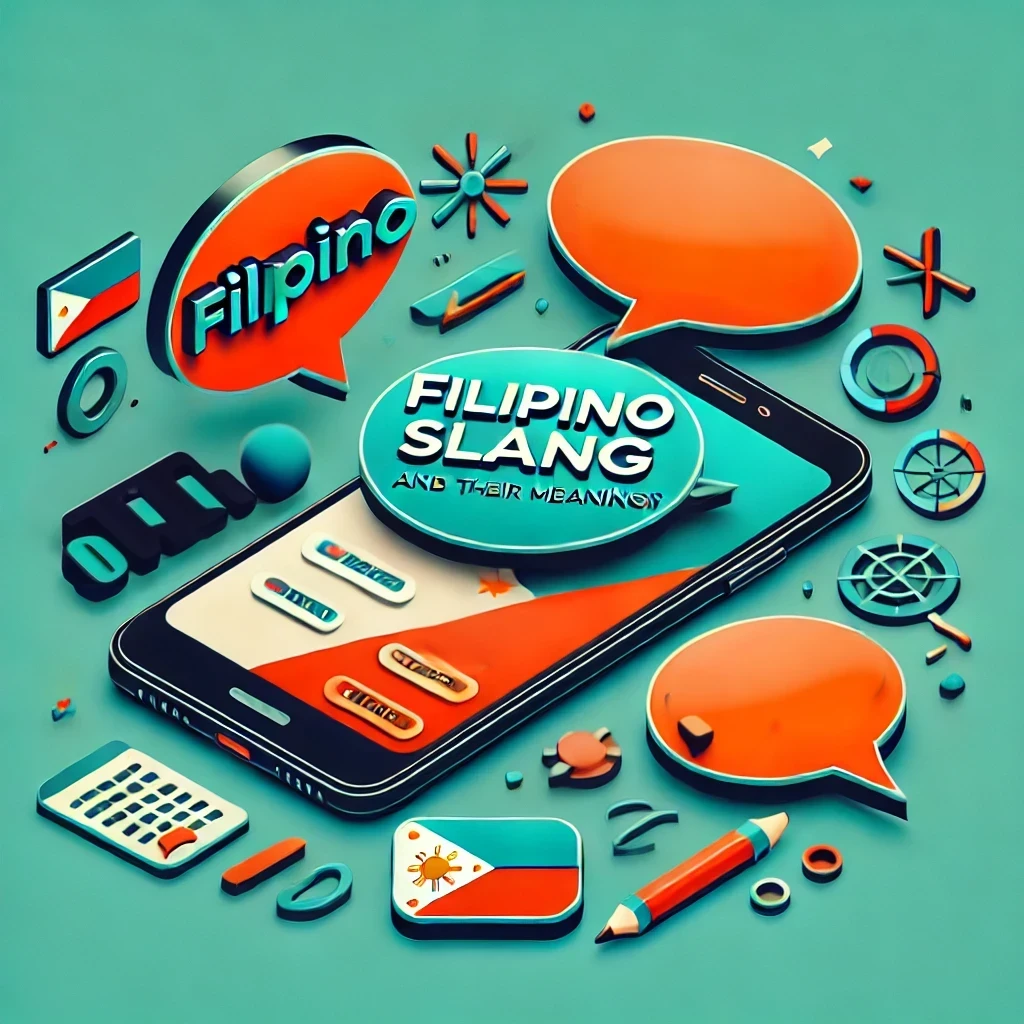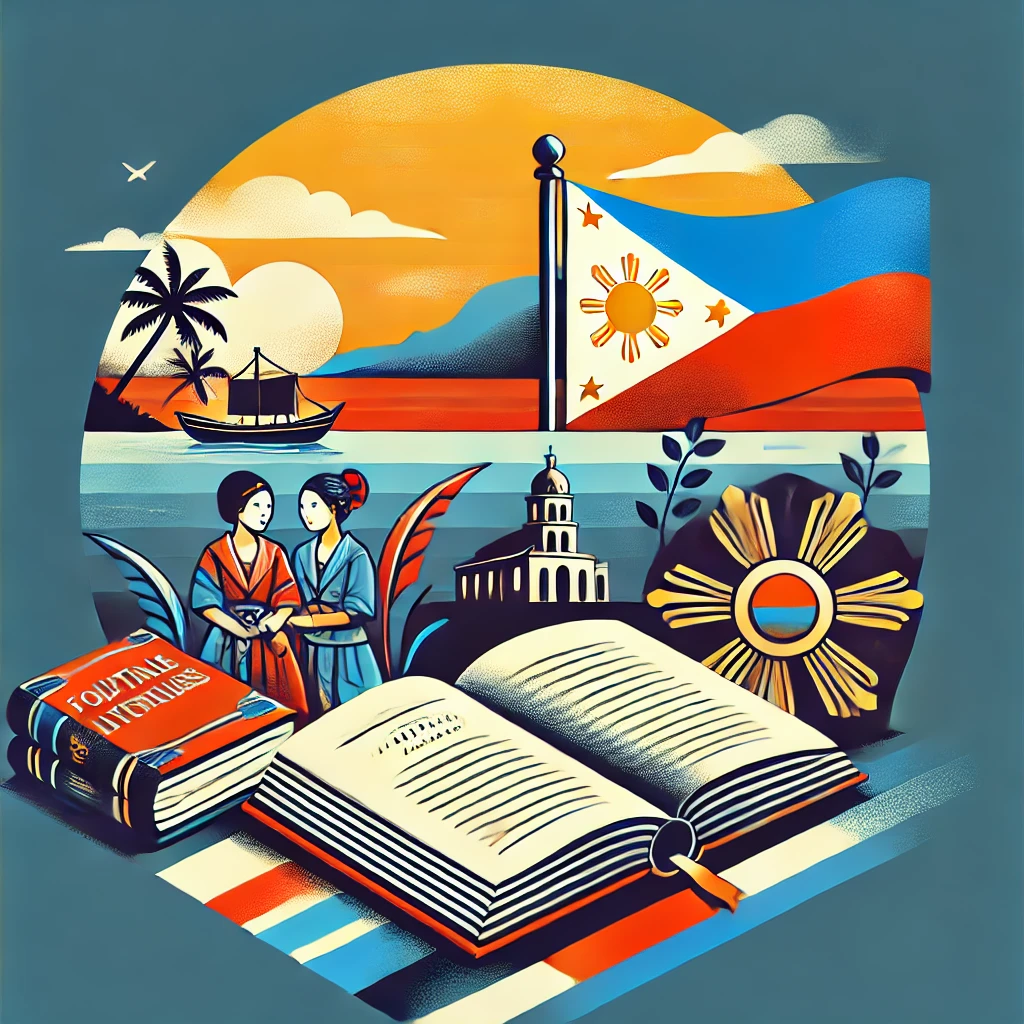The Filipino language, also known as Tagalog, is a rich and diverse linguistic tapestry that reflects the vibrant culture and history of the Philippines. One of the most fascinating aspects of this language is its extensive use of slang expressions, which add color, humor, and depth to everyday conversations. Filipino slang, or “salitang kalye” (street language), is a dynamic and ever-evolving part of the language that captures the essence of Filipino culture and social interactions. These colloquial expressions often originate from various sources, including regional dialects, pop culture, and even foreign influences, particularly Spanish and English. Understanding Filipino slang is crucial for anyone seeking to fully immerse themselves in the language and culture of the Philippines. This comprehensive exploration of Filipino slang will delve into its origins, common expressions, usage in different contexts, and the cultural significance behind these unique linguistic phenomena. By examining these expressions, we can gain valuable insights into the Filipino way of life, social norms, and the creative spirit that drives language innovation in the Philippines.
The Origins and Evolution of Filipino Slang
Filipino slang has a rich and complex history that mirrors the diverse cultural influences that have shaped the Philippines over centuries. The development of these colloquial expressions can be traced back to various sources, including indigenous languages, foreign colonizers, and modern pop culture. Understanding the origins of Filipino slang provides valuable context for appreciating its role in contemporary Filipino society. The Spanish colonial period, which lasted for over three centuries, left an indelible mark on the Filipino language, contributing numerous loanwords that eventually became part of everyday slang. Similarly, the American occupation in the early 20th century introduced English words and phrases that were adopted and adapted by Filipinos, often with altered meanings or pronunciations. In more recent times, the rise of social media, television, and other forms of mass communication has accelerated the creation and spread of new slang terms, particularly among younger generations. This constant evolution of Filipino slang reflects the adaptability and creativity of the Filipino people in their use of language.
Historical Influences on Filipino Slang
To better understand the diverse origins of Filipino slang, let’s examine some of the major historical influences:
- Indigenous languages: Many slang terms have roots in various Filipino dialects and indigenous languages.
- Spanish colonization: Over 300 years of Spanish rule introduced numerous words that were incorporated into slang.
- American occupation: The influx of English words during the American period significantly impacted Filipino slang.
- Japanese occupation: Although brief, the Japanese occupation during World War II left some linguistic traces.
- Modern media: Television, movies, and social media continue to shape and propagate new slang expressions.
Common Filipino Slang Expressions and Their Meanings
Filipino slang is incredibly diverse, with new expressions constantly emerging and old ones evolving. This section will explore some of the most common and enduring slang terms used in everyday Filipino conversations. It’s important to note that the meaning and usage of slang can vary depending on context, region, and even generational differences. Understanding these nuances is crucial for effective communication and cultural integration. The following table presents a selection of popular Filipino slang expressions, their literal translations, and their contextual meanings:
| Slang Expression | Literal Translation | Contextual Meaning |
|---|---|---|
| Barkada | Group | Close group of friends |
| Chika | Gossip | Chat or conversation |
| Gigil | Gritting teeth in frustration | Intense feeling of attraction or annoyance |
| Kilig | Tickled | Feeling of excitement or giddiness, especially in romantic situations |
| Petmalu | Reversed “malupet” | Awesome or amazing |
| Werpa | Reversed “power” | Good luck or more power to you |
| Bongga | None (invented word) | Fabulous or extravagant |
| Jowa | None (invented word) | Boyfriend or girlfriend |
| Porma | Form | Style or fashion |
| Tambay | Stand by | To hang out or loiter |
These expressions represent just a small fraction of the vast repertoire of Filipino slang. Each term carries with it cultural connotations and usage patterns that reflect the Filipino way of life and social interactions. For example, “barkada” emphasizes the importance of close-knit friendships in Filipino culture, while “kilig” captures a uniquely Filipino emotional experience that doesn’t have a direct English equivalent. Understanding and using these slang terms appropriately can greatly enhance one’s ability to connect with Filipino speakers and navigate social situations with ease.
Regional Variations in Filipino Slang
The Philippines is an archipelago of over 7,000 islands, with numerous regional languages and dialects. This linguistic diversity has led to significant variations in slang across different parts of the country. While many slang terms are widely understood throughout the Philippines, others may be specific to certain regions or even cities. These regional variations add another layer of complexity and richness to Filipino slang, reflecting the unique cultural identities of different areas within the country. For instance, slang used in Manila, the capital city, may differ substantially from that used in Cebu or Davao. Understanding these regional differences is crucial for anyone seeking to communicate effectively across different parts of the Philippines.
Examples of Regional Slang Variations
Here are some examples of slang terms that vary by region:
- Metro Manila: “Pak ganern” (expression of agreement or approval)
- Cebu: “Piste yawa” (expression of frustration or anger)
- Davao: “Uy” (used as a greeting or to get attention)
- Ilocos: “Ading” (term of endearment for a younger person)
- Bicol: “Oragon” (awesome or great)
These regional variations highlight the importance of context and location when interpreting and using Filipino slang. What may be a common expression in one area could be unfamiliar or have a different meaning in another, underscoring the need for cultural sensitivity and awareness when navigating the diverse linguistic landscape of the Philippines.
The Role of Filipino Slang in Pop Culture and Media
Filipino slang plays a significant role in shaping and reflecting popular culture in the Philippines. It is extensively used in various forms of media, including television shows, movies, music, and social media platforms. The use of slang in these contexts not only adds authenticity and relatability to the content but also serves as a means of cultural expression and identity formation. Many Filipino celebrities and influencers are known for their distinctive use of slang, which often leads to the creation and popularization of new expressions. This interplay between slang and pop culture creates a dynamic feedback loop, where media both draws from and contributes to the evolution of Filipino slang.
Impact of Social Media on Filipino Slang
The rise of social media platforms has had a profound impact on the development and dissemination of Filipino slang. Platforms like Facebook, Twitter, and TikTok have become breeding grounds for new slang terms and have accelerated the rate at which these expressions spread across different regions and social groups. The following graph illustrates the increasing influence of social media on Filipino slang usage over the past decade:
This graph demonstrates the strong correlation between the growth of social media usage in the Philippines and the proliferation of new slang terms. As social media platforms have become more prevalent, they have provided a fertile ground for linguistic innovation and rapid dissemination of new expressions. This trend highlights the dynamic nature of Filipino slang and its responsiveness to technological and social changes.
Filipino Slang in Different Social Contexts
The use of Filipino slang varies significantly depending on the social context and the relationship between speakers. Understanding these contextual nuances is crucial for appropriate and effective communication in different settings. Filipino slang can serve various functions, from expressing intimacy and solidarity among friends to establishing social boundaries or indicating group membership. In formal settings, the use of slang may be limited or avoided altogether, while in casual situations, it can be a primary mode of communication. This section explores how Filipino slang is used in different social contexts and the implications of its usage.
Slang Usage in Various Social Settings
The following table illustrates how the appropriateness of slang usage varies across different social contexts:
| Social Context | Slang Usage Level | Examples of Appropriate Slang |
|---|---|---|
| Family gatherings | Moderate | “Kain tayo” (Let’s eat) |
| Workplace | Low to Moderate | “Overtime” (to work extra hours) |
| Academic settings | Low | “Cher” (teacher) |
| Among friends | High | “Tara, gala tayo” (Let’s go out) |
| Social media | Very High | “Lit” (exciting or excellent) |
| Formal events | Very Low | Limited to widely accepted terms |
This table demonstrates how the acceptability and frequency of slang usage change depending on the social setting. In more formal contexts, such as academic or professional environments, slang usage is generally limited to widely accepted terms or avoided altogether. In contrast, casual settings like social media or interactions among friends often feature a high degree of slang usage, including more innovative and recent expressions. Understanding these contextual differences is essential for navigating various social situations and communicating effectively in Filipino society.
The Impact of Filipino Slang on Language Learning
For language learners studying Filipino, understanding and using slang can be both a challenge and an opportunity. On one hand, slang expressions often deviate from standard grammar rules and may have meanings that are not immediately apparent from their constituent words. This can make comprehension difficult for non-native speakers. On the other hand, mastering Filipino slang can greatly enhance a learner’s ability to communicate naturally and connect with native speakers on a deeper level. It provides insights into Filipino culture, humor, and social dynamics that may not be accessible through formal language study alone. Language learning materials and courses are increasingly incorporating slang and colloquial expressions to provide a more comprehensive and practical approach to Filipino language acquisition.
Tips for Language Learners Approaching Filipino Slang
- Immerse yourself in Filipino media to expose yourself to slang in context.
- Practice with native speakers who can explain nuances and appropriate usage.
- Be cautious when using slang until you understand its connotations and social implications.
- Stay updated on current slang trends through social media and pop culture.
- Learn the origins of slang terms to better understand their meanings and usage.
By following these tips, language learners can develop a more nuanced understanding of Filipino slang and improve their overall communication skills in the language.
The Future of Filipino Slang
As with any living language, Filipino slang continues to evolve at a rapid pace. New expressions emerge regularly, while others fall out of use or change meaning over time. The future of Filipino slang is likely to be shaped by several factors, including technological advancements, global cultural influences, and social changes within the Philippines. The increasing interconnectedness of the global community through digital platforms may lead to more cross-cultural exchanges and the adoption of international slang terms into Filipino. However, it is also likely that distinctly Filipino expressions will continue to emerge, reflecting the unique experiences and perspectives of the Filipino people. Linguists and cultural observers will undoubtedly find rich material for study in the ongoing evolution of Filipino slang.
Predicted Trends in Filipino Slang Development
- Increased influence of English and other foreign languages due to globalization.
- More rapid creation and dissemination of new slang terms through social media.
- Greater regional variations as local identities are emphasized in a globalized context.
- Emergence of tech-related slang reflecting the growing digital economy.
- Continued use of word play and linguistic creativity in slang formation.
These trends suggest that Filipino slang will remain a dynamic and integral part of the language, adapting to new social realities while maintaining its distinctive character and cultural significance.
Conclusion
Filipino slang is a vibrant and essential component of the Filipino language that offers a window into the culture, humor, and social dynamics of the Philippines. From its diverse historical origins to its current role in pop culture and everyday communication, Filipino slang continues to evolve and shape the way Filipinos express themselves. Understanding these unique expressions not only enhances language proficiency but also provides valuable insights into Filipino society and values. As the language continues to adapt to new influences and technologies, Filipino slang will undoubtedly remain a fascinating area of study for linguists, cultural anthropologists, and language enthusiasts alike. Whether you’re a language learner, a cultural observer, or simply someone interested in the richness of human expression, Filipino slang offers a wealth of material to explore and appreciate. By embracing the creativity and diversity of these colloquial expressions, we can gain a deeper understanding of the Filipino people and their unique place in the global linguistic landscape.
Disclaimer: This article presents a general overview of Filipino slang based on available information and research. Slang usage can vary widely depending on region, social context, and individual preferences. The meanings and appropriateness of slang terms may change over time. Readers are encouraged to seek additional resources and consult with native speakers for the most up-to-date and nuanced understanding of Filipino slang. If you notice any inaccuracies or have additional insights to share, please report them so we can correct and improve this information promptly.




